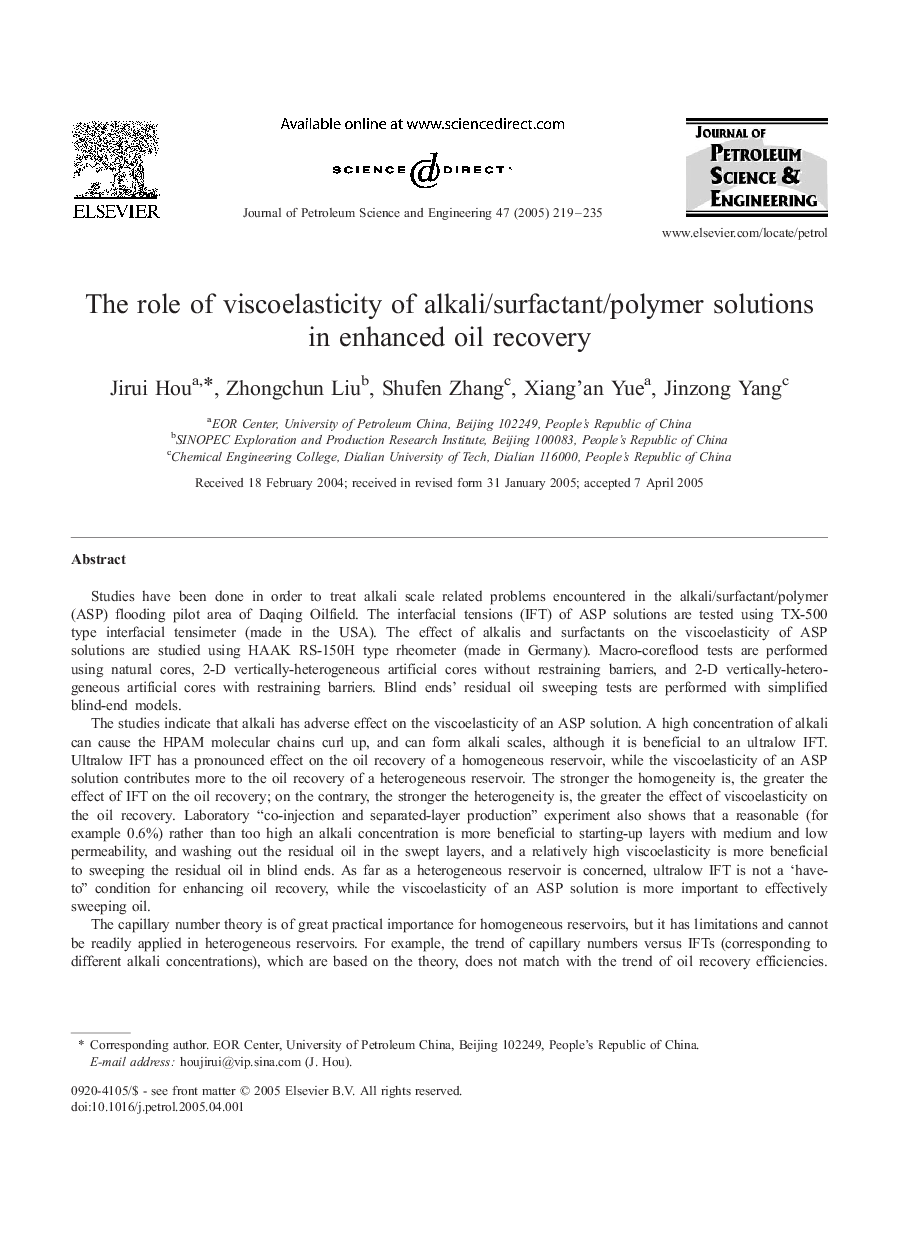| Article ID | Journal | Published Year | Pages | File Type |
|---|---|---|---|---|
| 9826565 | Journal of Petroleum Science and Engineering | 2005 | 17 Pages |
Abstract
The capillary number theory is of great practical importance for homogeneous reservoirs, but it has limitations and cannot be readily applied in heterogeneous reservoirs. For example, the trend of capillary numbers versus IFTs (corresponding to different alkali concentrations), which are based on the theory, does not match with the trend of oil recovery efficiencies. Therefore, for a heterogeneous reservoir, without an ultralow IFT (for example with an IFT of 10â2 mN/m), i.e. with a reasonably lower alkali concentration, a satisfying oil recovery can still be achieved as long as the viscoelasticity is high enough. This not only can solve the problems caused by alkali scales, but also can enlarge the selecting range of surfactants and reduce the cost of ASP flooding.
Related Topics
Physical Sciences and Engineering
Earth and Planetary Sciences
Economic Geology
Authors
Jirui Hou, Zhongchun Liu, Shufen Zhang, Xiang'an Yue, Jinzong Yang,
